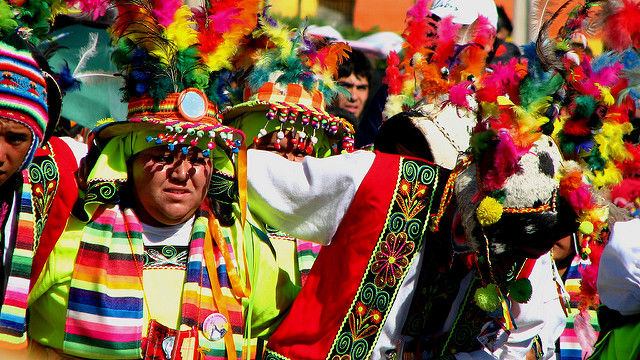Before I studied the Quechua people in Peru, I did not have that much background knowledge of the group. My mom had a large fascination with the indigenous people of Peru, which was part of the reason I chose them for my project. I just thought of them as a group of people that lived in villages up in the mountain far away from large societies. I did not know really anything about them besides the fact that they lived in Peru and were indigenous to the area.
The single story of Quechua natives, which I would believe to be that they are mountain people that live a simpler life is just not true. They are much more evolved in the business world than we think. I just read an article that states that Peru is one of the countries with the highest percentage of women entrepreneurs in the world due to the greater presence in small sized enterprises. That definitely goes beyond the single story of what most people think of the Quechua people especially Quechua women and I think that this can inspire women across the world.
I think tourism has a positive and negative impact on the culture. It is positive because tourism is the third largest industry in Peru. There is a lot of economic growth and prosperity that can come from all the cultural tourism to help build a stronger and more stable economy, which could help preserve, celebrate, and embrace their culture more strongly. The negative side of tourism is the promotion of the single story of the Quechua people from the traditional medicine angle. Traditional medicine and shamanism is part of their culture with ancient roots and adding a tourist component could potentially promote the single story of traditional medicine being solely ayahuasca retreats and ceremonies, which is not the case. People from outside of the culture may not respect traditional healers and their practices as relevant or constructive, however that is an ethnocentric thought because you cannot compare our western medicine to their traditional medicine. If tourists do want to participate in these priceless and life changing traditional healing practices, my hope is that they do not look at it as a menial fun experience but healing rooted in deep ancient culture from the Quechua perspective.
Since I was not able to truly immerse myself in the culture physically, I immersed myself in descriptive videos and articles while trying to understand their culture through their eyes and not my own. Specifically focusing on their festivals and celebrations and use of traditional medicine. I have grown up in a culture so different, that immersing myself as much as I could mentally has deepened my understanding of Others. Just because it is not the same does not make it wrong or bad. Being able to discover new ways to live with different lifestyles and cultures is so refreshing to know that there is not just one way or one story.
Creating and using a blog was a totally new experience for me. I was not internet savvy when it came to any type of posting on the internet. I discovered how to create a blog and use the tools in it such as how to post, change the layout, add hyperlinks, tags, and pictures. These tools helped me successfully complete the mini research project.




